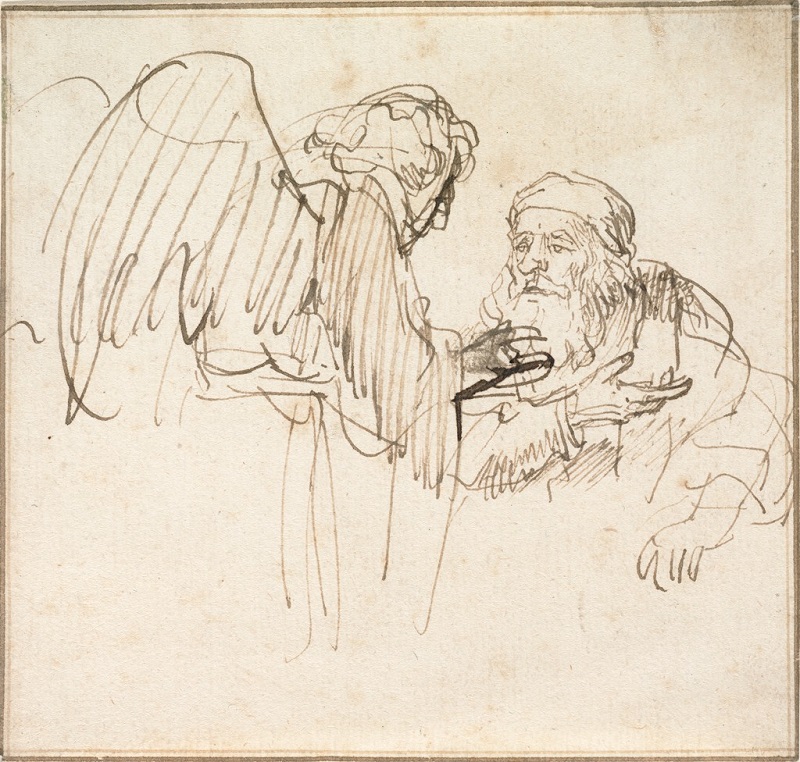Zacharias and the Angel by Rembrandt

The subject of the drawing is not clearly identifiable, but Rembrandt used it to address an artistic and iconographic problem that deeply engaged him and his pupils: the portrayal of a human emotional response to divine revelation. The sketch also utilizes a compositional strategy Rembrandt would later introduce in paintings of biblical subjects: isolating the principal protagonists to concentrate on their interaction. Here he omits any reference to the setting or narrative context that would help to identify the old man and the incident depicted.
When the priest Zacharias went alone into the temple to burn incense, an angel appeared and promised that a son, the future St. John the Baptist, would be born to him and his barren wife, Elizabeth. Incredulous, Zacharias asked, "Whereby shall I know this? For I am an old man and my wife well stricken in years." The angel rebuked him for doubting God's will: "I am Gabriel, that stand in the presence of God; and am sent to speak unto thee, and to shew thee these glad tidings." This last exchange (Luke 1:18-19) is presumably the one represented in the drawing. Viewed from below, the angel rises above Zacharias and confronts him directly with a declamatory gesture, which Rembrandt revised so completely that it is now barely legible. The old man wears a questioning facial expression and, lips parted to speak, refers with his hand to something or someone (Elizabeth?) absent.




















